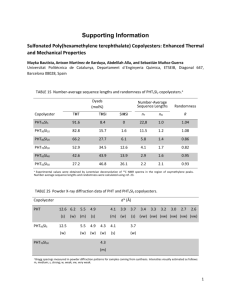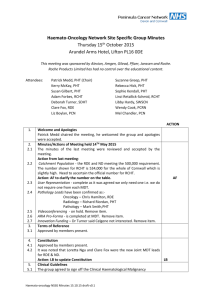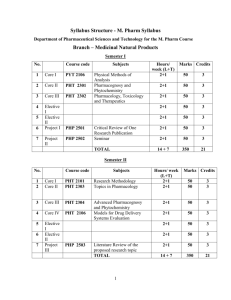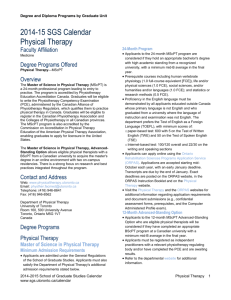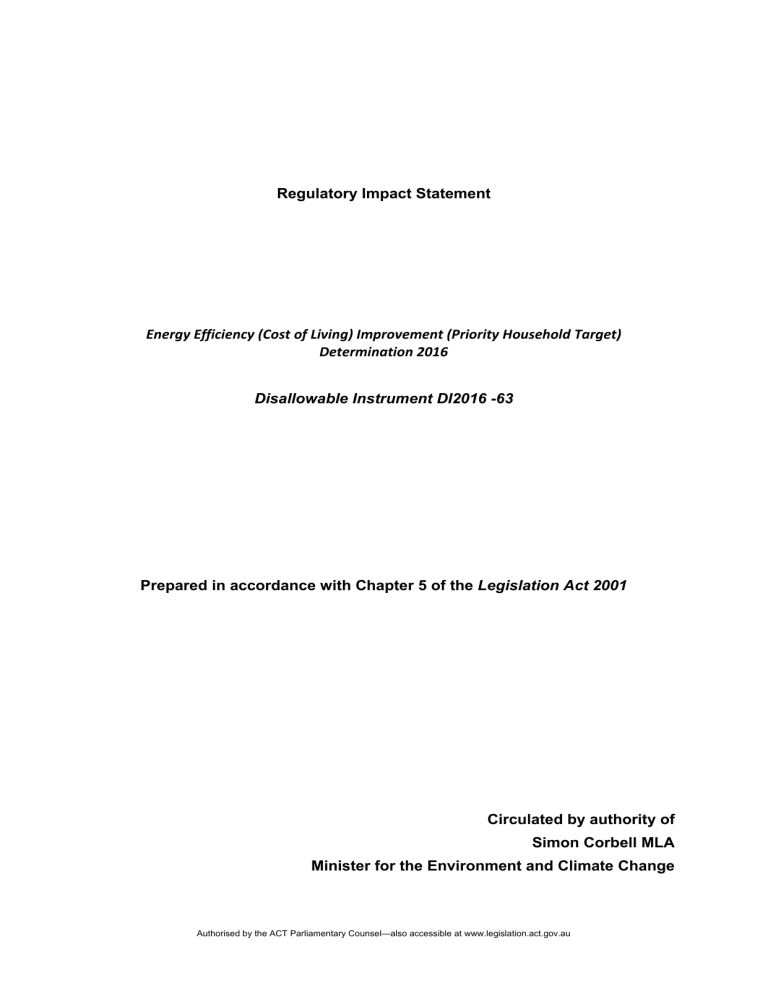
Regulatory Impact Statement Energy Efficiency (Cost of Living) Improvement (Priority Household Target) Determination 2016 Disallowable Instrument DI2016 -63 Prepared in accordance with Chapter 5 of the Legislation Act 2001 Circulated by authority of Simon Corbell MLA Minister for the Environment and Climate Change Authorised by the ACT Parliamentary Counsel—also accessible at www.legislation.act.gov.au Executive Summary This Regulatory Impact Statement is prepared in accordance with Part 5.2 of the Legislation Act 2001 for establishing the Priority Household Target (PHT) for 2017, as a disallowable instrument made under section 8 of the Energy Efficiency (Cost of Living) Improvement Act 2012 (the Act). The authorising law The Act was passed by the Legislative Assembly on 3 May 2012. The Energy Efficiency Improvement Scheme (EEIS), established by the Act, a retailer obligation energy efficiency scheme, was initially legislated to run until 31 December 2015. On 4 August 2015, the Legislative Assembly passed the Energy Efficiency (Cost of Living) Improvement Amendment Act 2015 which amended the Act to continue the EEIS to 31 December 2020. The Act establishes a Territory‐wide Energy Savings Target (EST) which correlates to mandatory energy savings obligations for individual electricity retailers based on their electricity sales in the ACT. The specific level of the EST, and other EEIS targets, are set by disallowable instruments for each compliance period, defined as a calendar year. Section 8 of the Act requires Tier 1 retailers to achieve a PHT for the total reduction in greenhouse gas emissions achieved in priority households for each compliance period. The PHT is expressed as a percentage of the retailer’s energy savings obligation and Tier 1 retailers are obliged to achieve a proportion of their energy savings obligation in low‐income households. Section 8 provides for the determination of the PHT by disallowable instrument. The Act requires Tier 1 retailers to achieve their EST by delivering eligible activities. Eligible activities are activities determined by the Minister to be eligible activities and include installing energy efficient light globes, draught seals, efficient water heaters and other items that save energy while maintaining quality of life. Theyachieve savings in greenhouse gas emissions and energy costs. Smaller, Tier 2 retailers can either deliver eligible activities or pay an Energy Savings Contribution. ActewAGL Retail (ActewAGL) is currently the only Tier 1 Retailer and also the only retailer delivering activities. ActewAGL is continuing to install energy saving items to households through its free Energy Saving House Calls. This document outlines the costs and benefits associated with determining the PHT at 20 per cent for 2017 through the disallowable instrument Energy Efficiency (Cost of Living) Improvement (Priority Household Target) Determination 2016. 2 Authorised by the ACT Parliamentary Counsel—also accessible at www.legislation.act.gov.au Policy objectives of the disallowable instrument and the reasons for them The policy objective of the disallowable instrument is to achieve the object of the Act relating to priority households. The Objects of the Act are established in section 6. Object (d) is to “increase opportunities for priority households to reduce energy use and cost”. This is consistent with the ACT Government’s strategic objective of helping households, businesses and schools to reduce energy and costs. Priority households are intended to be those lower income households who can benefit most from energy efficiency, but are least able to make improvements without additional assistance. Priority households are defined in the Act’s dictionary as a residential premises in which one person who lives at the premises – (a) is a recipient of an ACT Government energy concession; or (b) holds a Commonwealth pensioner concession card or health care card; or (c) holds a Department of Veterans Affairs pensioner concession card, TPI gold repatriation health care card, war widows repatriation health care card or gold repatriation health care card; or (d) is within a class of people prescribed by regulation. Achieving the policy objectives The disallowable instrument achieves a key policy objective of the Act, which provides for increased opportunities for priority households to reduce energy use and cost. It does this by setting the PHT at a level which ensures that priority households will benefit from the EEIS. The PHT was determined at 25 per cent each year from 2013 to 2015. This level was above the estimated 20 per cent of households receiving energy concessions and/or holding a concession card in the ACT. The 2014 EEIS Review1 (the EEIS Review) found that emission reduction targets had been consistently met for priority households. Consistent compliance with the PHT has also been confirmed by the audit and compliance processes completed by the EEIS Administrator. Although ensuring energy savings are achieved in low income households remains a Government priority, the EEIS Extension Regulatory Impact Statement2 (the EEIS Extension RIS) recommended the PHT be decreased in 2016 to 20 per cent, based on modelling results 1 Jacobs Group (Australia) Pty Limited (2014) Energy Efficiency Improvement Scheme Review. http://www.environment.act.gov.au/__data/assets/pdf_file/0003/642315/ACT-EEIS-Review-FinalReport.pdf 2 ACT Government Environment and Planning Directorate (2015) Energy Efficiency Improvement Scheme: Setting Key Parameters to 2020. Regulatory Impact Statement. http://www.environment.act.gov.au/__data/assets/pdf_file/0006/735990/Attachment-C-RegulatoryImpact-Satement-EEIS-Parameters-to-2020-FINAL.pdf . 3 Authorised by the ACT Parliamentary Counsel—also accessible at www.legislation.act.gov.au and consultation reported in the EEIS Review (EEIS extension RIS p.20). The EEIS Review, the EEIS Extension RIS and consultation undertaken for this process of setting the 2017 PHT all confirm that the PHT is having the effect of balancing costs to consumers, while ensuring priority households in the ACT continue to benefit from the EEIS. Even at 20 per cent, the PHT remains a stretch target, as discussed under “Reasonable Alternatives to the Stretch Target” below. It is also worth noting that the option of a PHT carry‐over surplus means that the incentive to overshoot the target also remains. For the purposes of modelling, all household costs and savings assume a 20 per cent PHT for the period 2016 to 2020. However, the target will continue to be subject to annual review, which is why it is only being set until the end of 2017 at this stage. Consultation Extensive consultation was undertaken before determining the 2016 PHT. This disallowable instrument continues the target that resulted from the previous extensive consultation, as documented in the 2014 Review. Even though the setting of the 2017 PHT represents no change from the current policy position, consultation has been completed as follows. Consultation is ongoing with ActewAGL. As the only Tier 1 retailer in the ACT, ActewAGL is most directly affected by the PHT. It has confirmed that its business forecasting is consistent with meeting the proposed PHT in both 2016 and 2017. It has also noted that in the long‐run, the method for calculating the PHT may inhibit the expansion of the EEIS to the commercial sector. That is because the PHT target is a proportion of total abatement, not abatement delivered in the residential sector. Because of that, any abatement delivered to businesses has the effect of increasing the proportion of residential abatement that must be delivered in priority households. ActewAGL has requested that this issue be considered in any upcoming review of the Act. Consultation was undertaken on 17 March 2016 with the ACT Council of Social Services (ACTCOSS) through an email exchange. ACTCOSS confirmed that it considers continuing the EEIS PHT at 20 per cent for 2017 is an absolute priority. ACTCOSS noted that the ACT Government Review of Concessions has identified increasing access to assistance with energy costs and point to ACTCOSS submissions on this matter published at: ACTCOSS (2016) Submission on Discussion Paper: Options to Improve the Fairnes and Targeting of the ACT Concessions Program, http://www.actcoss.org.au/publications/Publications_2016/2016‐submission‐ options‐to‐improve‐fairness‐targeting‐of‐act‐concessions‐program.pdf ACTCOSS (2015) Submission on Review of the ACT Concessions Scheme, http://www.actcoss.org.au/publications/Publications_2015/0315sub‐review‐of‐act‐ concessions‐scheme.pdf ACTCOSS also notes that it has been part of two research projects over the past 12 months that affirm the relatively high level of household income that is spent on energy costs in 4 Authorised by the ACT Parliamentary Counsel—also accessible at www.legislation.act.gov.au households in the bottom 40 per cent income groups. These high costs relative to income compromise overall well‐being and financial stability in those households. Any assistance that can be given to reduce energy costs is highly valued and provides a return on investment in both health status and capacity to cover other essential costs like housing. Links to two research papers on these matters are at: http://www.actcoss.org.au/publications/Publications_2015/0415rep‐act‐cost‐of‐ living‐report.pdf http://www.actcoss.org.au/publications/Publications_2016/2016‐consortium‐ project‐2‐report‐housing‐affordability‐and‐the‐labour‐market‐in‐the‐act.pdf Housing ACT was consulted on 9 March 2016 on the proposal to continue the 20 per cent PHT for 2017 through an email exchange. It confirmed support for the proposal. St Vincent de Paul was consulted on 9 March 2016 on the proposal to continue the 20 per cent PHT for 2017. It confirmed support for the proposal. Consistency of the disallowable instrument with the authorising law The disallowable instrument is consistent with the object of the Act to increase opportunities for priority households to reduce energy use and cost. The authorising law requires the Minister to set a PHT at least three months before the start of the compliance period to which the priority household target relates. The requirement is for the PHT to be established six‐months before the start of the compliance period if the PHT is to be increased. Compliance periods are calendar years. As the proposal is to retain, rather than to increase the PHT, the authorising law requires the PHT to be set at least three months before the end of 2016. The disallowable instrument is not inconsistent with the policy objectives of another Territory law The proposed law is not inconsistent with the policy objectives of another Territory law. Reasonable alternatives to the disallowable instrument Section 8 of the authorising law is explicit in its requirement for a PHT to be determined by the Minister and provides for no alternative. The PHT could potentially be determined at either a lower or a higher level. A case for increasing the PHT would rely on ActewAGL’s success in achieving the target between 2013 and 2015. However, there is good evidence that the PHT of 20 per cent remains a ‘stretch target’. This is because the majority of priority households have already benefited from the EEIS and there are genuine challenges in continuing to deliver high abatement in priority households. This is because the ‘easy wins’ have already been 5 Authorised by the ACT Parliamentary Counsel—also accessible at www.legislation.act.gov.au achieved and new business models are needed to continue delivering high levels of abatement to priority households. Meanwhile, the extension of the EEIS until 2020 includes a clear policy position of extending the benefits to the commercial sector and a higher PHT would provide a disincentive for Tier 1 retailers to enter this sector. Consideration of these issues suggests that an increase in the PHT is inadvisable. A case for decreasing the PHT would need to make a case that there is no longer a policy goal of assisting those with least capacity to pay energy bills. The consultation with ACTCOSS in particular presents a strong case that the policies behind the PHT are still necessary. The conclusion from considering alternatives is that there is a strong case for continuing the PHT at 20 per cent. Assessment of benefits and costs of the disallowable instrument The modelling for the continuation of the EEIS until 2020 which is reported in the EEIS Extension RIS, assumed a 20 per cent PHT. This modelling showed that the net present value of the EEIS is maximised with all targets, including the 20 per cent PHT, set at their current rates. EEIS implementation results have generally been consistent with the modelling and so there is no reason to reject the modelling and change the PHT. In particular, the PHT ensures that benefits from the EEIS are systematically weighted towards those in most need, while the costs are equally distributed through the economy. A 20 per cent PHT ensures an ongoing social benefit from the Act. If the PHT remains at 20 per cent for 2017 then the projected benefits include average lifetime bill savings for the ACT residential sector estimated at $106 million in present value terms. Benefits to ACT businesses are estimated at $192 million in present value terms. Taking account of all costs to retailers, government and all stakeholders, the expected overall result in net present value to the ACT economy is $38.9 million. Human Rights The determination does not affect any human right set out in the Human Rights Act 2004. Assessment of the consistency of the proposed law with Scrutiny of Bills Committee principles The Committee's terms of reference require it to consider whether (among other things): (a) any instrument of a legislative nature made under an Act which is subject to disallowance and/or disapproval by the Assembly (including a regulation, rule or by‐law): i. is in accord with the general objects of the Act under which it is made; ii. unduly trespasses on rights previously established by law; iii. makes rights, liberties and/or obligations unduly dependent upon non reviewable decisions; or 6 Authorised by the ACT Parliamentary Counsel—also accessible at www.legislation.act.gov.au iv. contains matter which in the opinion of the Committee should properly be dealt with in an Act of the Legislative Assembly; As noted above, the disallowable instrument is in accordance with the general objects of the Act. The disallowable instrument does not unduly trespass on rights previously established under law. The disallowable instrument and the process of setting a priority household target is a requirement of the Act. The Act requires that a PHT be established by disallowable instrument and that is the sole purpose of this instrument. Conclusion This Regulatory Impact Statement complies with the requirements for a disallowable instrument as set out in Part 5.2 of the Legislation Act. An explanatory statement for the disallowable instrument has been prepared for tabling. 7 Authorised by the ACT Parliamentary Counsel—also accessible at www.legislation.act.gov.au
